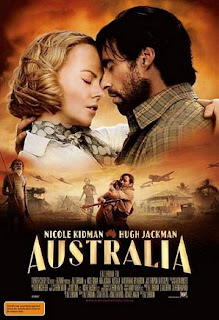 There’s a definite classic feel to “Australia,” as if all the grandiose epics of Old Hollywood mated and gave birth to an anachronistic child. At last, Baz Luhrmann has made a film with the scope to contain his oversaturated flash, a fairy tale about a wide open land and star-crossed lovers. Unfortunately, the film’s size simply bloats Luhrmann’s already glaring flaws and makes for a tedious experience.
There’s a definite classic feel to “Australia,” as if all the grandiose epics of Old Hollywood mated and gave birth to an anachronistic child. At last, Baz Luhrmann has made a film with the scope to contain his oversaturated flash, a fairy tale about a wide open land and star-crossed lovers. Unfortunately, the film’s size simply bloats Luhrmann’s already glaring flaws and makes for a tedious experience.“Australia” starts simply enough: an English aristocrat, Lady Sarah Ashley (Nicole Kidman) travels to Australia to visit her husband’s flagging cattle ranch, only to find him recently murdered. A rival cattle baron seeks a monopoly, and tries to force Ashley out o business. Sarah fights back with the help of a mixed race child named Nullah and “The Drover” (Hugh Jackman), a cattle-herder who is rugged, handsome and, when the situation calls, shirtless. They must get their cattle to the port town of Dover to ensure the ranch’s survival, all the while being sabotaged by Neil Fletcher (David Wenham), a higher-up in the rival rancher’s pay.
The film starts out decently enough, but it wastes no time beating you about the head with Luhrmann’s usual cartoon-ish nonsense. Nicole Kidman spends the first hour making goofy faces that equally reflect shock, outrage, and mild intrigue, and her facial contortions are so over the top I began to wonder if I was watching an old sitcom with the laugh track turned down. The Australians are dusty and say “Crikey” a lot, and the ragtag team gets the cattle across the harsh Outback.
It is around the two hour mark (where the film should have ended, by the way), that we are suddenly plunged into the dreaded territory of Serious Business. The bouncy slice of optimism abruptly turns into a somber look at the frightfully-racist-yet-not-as-frightfully-racist-as-it-actually-was Australia. Nullah, a complete outcast because of his mixed race, is taken to a island mission, which presents the first tactical target to the approaching Japanese.
We learn of Australia’s horrible policy of removing aborigine children from their families and adopting them to white homes, which might have made more emotional impact if the whole thing wasn’t so campy. Sorry, but you can’t go about making cartoon faces and suddenly talk about racism. Well, maybe Charlie Chaplin could, but then we wasn’t a flashy hack.
And why is it that films that criticize racism always seem to employ stereotypes? An Asian fellow works at Sarah’s ranch and speaks in a heavy accent guaranteed to score cheap laughs. And Nullah…oh, where do you start? He speaks an annoying type of pidgin English that is often incomprehensible. Worse, he provides the voice-over narration. Voice-overs are bad enough, but a voice-over in near gibberish? Why bother? Imagine how much worse “Episode I” would have been if Jar-Jar narrated it.
The only bright spot in any of this is David Wenham. Wenham, who starred as Faramir in the “Lord of the Rings” films, puts in a performance far better than the film deserves. His Fletcher is a cold, soulless demon who stalks the rival ranchers with increasing vigor, not because he is getting paid but because he simply enjoys it. He has no real loyalties and only loses his temper when his status is threatened. The only redeeming part of the tacked on 45 minute final act is that we see more of him.
So what are we left with? The film sure is pretty to look at, but so is a poison dart frog, and you shouldn’t go pawing one of those. Luhrmann set out to make “Australia” his “Gone With The Wind,” and instead he made a spiritual sequel to “Pearl Harbor.” Speaking of, I’m beginning to suspect that Hollywood is pushing forward some sort of revisionist history in which the Japanese got involved in the war in an effort to firebomb dull romances off the face of the Earth. If so, then the United States owes them an apology.
Comments: 0
Post a Comment